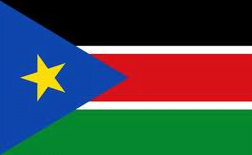As part of Reuters’ Birthing of a Nation series marking the Republic of South Sudan’s first year of independence, reporter Rebecca Hamilton writes a deeply reported history of a group that can be considered South Sudan’s American Mid-wives.
This is a small group of well connected men and women in the United States who have met regularly since the 1980s to plot a path for South Sudan’s independence. You’ve probably heard many of these names before: John Prendergast; Susan Rice; and Eric Reeves. And those of us who follow Sudan closely are well aware of the role former State Department official Roger Winter and former congressional research service Africa expert Ted Dagne have played in advocating for South Sudan, among others mentioned in Hamilton’s piece.
What I did not know before I read this story, though, is just how organized this group has been over the decade. They’ve met regularly — at the same restaurant — for years to plot a path for South Sudan’s independence. They even called their crew “The Council,” and gave nicknames to each other like “emperor”and “diplomat.” It was a secret club who’s goal was to win independence for a long suffering people in South Sudan.
Rebecca Hamilton explains:
In the mid-1980s, a small band of policy wonks began convening for lunch in the back corner of a dimly lit Italian bistro in the U.S. capital.
After ordering beers, they would get down to business: how to win independence for southern Sudan, a war-torn place most American politicians had never heard of.
They called themselves the Council and gave each other clannish nicknames: the Emperor, the Deputy Emperor, the Spear Carrier. The unlikely fellowship included an Ethiopian refugee to America, an English-lit professor and a former Carter administration official who once sported a ponytail.
The Council is little known in Washington or in Africa itself. But its quiet cajoling over nearly three decades helped South Sudan win its independence one year ago this week.
Across successive U.S. administrations, they smoothed the path of southern Sudanese rebels in Washington, influenced legislation in Congress, and used their positions to shape foreign policy in favor of Sudan’s southern rebels, often with scant regard for U.S. government protocol.
This group coalesced around John Garang, the charismatic rebel leader who eventually signed the 2005 peace deal that lead to the South’s independence last year. When the Darfur crisis became acute, Hamilton explains how Garang encouraged “The Council” to take up the cause of Darfur as part of a larger story about Khartoum’s malfeasance.
As the Darfuri rebellion escalated, Khartoum moved to crush it. The Council immediately saw the parallels between Khartoum’s response and previous atrocities in the south. But shifting the U.S. focus to Darfur could jeopardize the peace agreement for the south.
Dagne consulted Garang, who encouraged him to introduce the Darfuri cause to the U.S. lawmakers backing the southerners. The Council stepped in; over the coming years they would be among the most crucial actors in cementing the previously unknown Darfur region in the imagination of the American public.
Prendergast, at the time working at an independent research group, became a key player in the founding of the Save Darfur movement. He spent weeks at a time talking about Darfur on college campuses and working with actor George Clooney, who became an advocate for the cause. Reeves and Rice, then a senior fellow at the Brookings Institute, wrote op-ed pieces.
To that end, they were highly effective. A few years ago, I did some research into media coverage of Darfur. I found that between February 2004 (when a Washington Post op-ed from Eric Reeves first described Darfur as a genocide) and September 2004 (when Secretary of State Colin Powell first designated Darfur as a “genocide”) the New York Times ran a total of 68 items mentioning Darfur and genocide. Of these 68 items, 29 came from news desks. The other 39 items appeared on opinion pages. The Washington Post mentioned Darfur and genocide a total of 67 times, 27 of which from news desks and 40 from the opinion pages.
The opinion pages drove the news coverage..and these opinions were not necessarily diverse! By and large came from members of “The Council,” (plus Nicholas Kristof) and a couple of other similarly minded people.
This is all to say that the story that Hamilton weaves in 5,000 words shows how a group of organized and focused individuals can shape policy in Washington DC and to alter the history of Africa. It’s an incredible piece of reporting. Read it.
